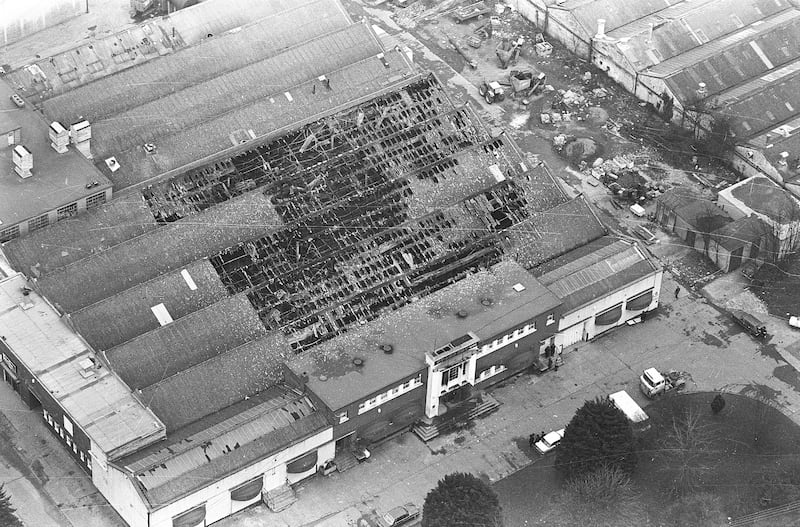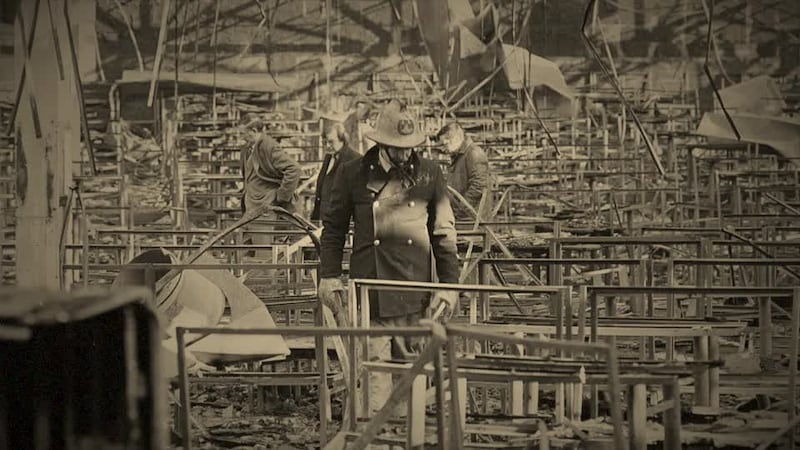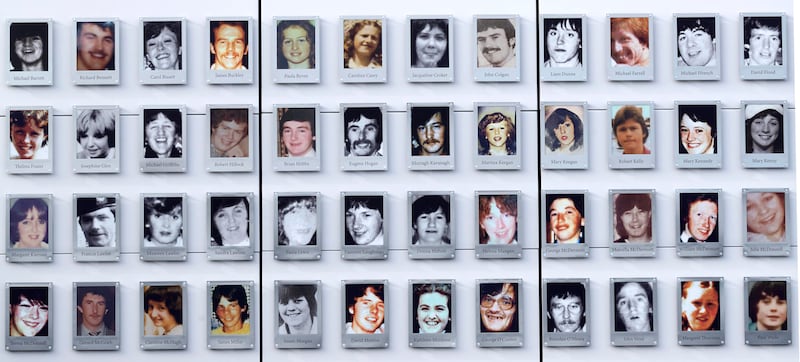Eamon Butterly, the former manager of the Stardust nightclub in north Dublin where 48 young people died in a fire in 1981, is due to take the stand at Dublin District Coroner’s Court this week.
The 78-year-old is likely to be among the most significant witnesses at the inquests, and is certainly the most eagerly anticipated.
Given that he has not spoken publicly about the disaster in more than four decades, most of the living relatives of those who died in the blaze will have never heard Butterly’s voice, much less his interpretation, explanation or even description of what happened, and why.
He was 36 years old on the night of February 13th/14th, 1981, and, as general manager, was present when a small fire, first spotted on a couchette at the back of tiered seating, spread rapidly up carpet-tiled walls, shot across the low-hung ceiling and over the dance-floor, engulfing the entire venue within four minutes.
RM Block
He had also been in charge between mid-1977 and March 1978 when the Stardust opened, overseeing the conversion of a former food factory on the site at Kilmore Road, Artane into an entertainment venue. The building was owned by R&W Scott (Ireland) Ltd, a food processing company, which was owned by the Butterly family and run principally by the late Patrick Butterly, Eamon Butterly’s father.
While Butterly will certainly face robust questioning from legal teams for the 45 bereaved families, counsel for Dublin City Council is likely to have searching questions too. The then Dublin Corporation paid out damages of £581,000 (about €730,000) to the companies owned by the Butterly family in 1983.
Both Butterly and his late father argued that the fire was started deliberately. They said the corporation failed to properly inform them about and oversee planning regulations and bylaws as they pertained to entertainment venues.
The finding by Mr Justice Ronan Keane, who chaired the 1981 tribunal of inquiry into the disaster, that the “probable explanation of the fire is that it was caused deliberately” enabled the Butterlys to take their case for damages while also blocking families from seeking compensation from either the Butterlys or the State.
A source of enormous pain for the families, the finding was regarded as effectively blaming the young people for the fire that killed 48 and seriously injured 221. Given that “probable arson” was removed from the public record by the Houses of the Oireachtas in 2009, it will be interesting to see whether Butterly maintains the position that the fire was started maliciously.

In his 1981 Garda statements, and at the Keane tribunal, he laid the blame for a litany of failings, both during the conversion of the Scott’s Foods factory into the Stardust complex and in how it was managed once open, at the doors of others.
Mr Justice Keane, in his final report, was highly critical of the failure of Butterly to employ properly qualified architects or draughtsmen who would have been familiar with building regulations, but also of Dublin Corporation, describing its inspections of the building as “gravely inadequate”.
The venue’s internal walls were almost fully covered in polyester fibre carpet-tiles, on a PVC backing, attached with a synthetic adhesive. They did not comply with fire regulations. Butterly argued that he had believed they did, that he got fire safety certificates for them, and no one had told him they were not compliant. The safety certificates provided, however, pertained to use of the carpet tiles on floors.
The chipboard and steel-frame seats, padded with polyurethane foam and covered in PVC-coated fabric, rendered the seating “combustible”, Justice Keane found. Butterly told gardaí: “As Dublin Corporation did not object to the seating I assumed that the seating was safe, and in compliance with their requirements.”
Butterly will also face questioning on the lacks of fire drills, training in the use of fire extinguishers and evacuation procedures for staff, which a number of doormen have pointed to as factors in the carnage that night.
In 1981, he said only kitchen staff were deemed in need of fire training as “the kitchen [was] the only source of a fire in the Stardust”.
“Had the appropriate precautions been in existence to ensure an efficient evacuation on the night of the fire, the injuries sustained would have been unquestionably less and the death toll would almost certainly have been reduced,” said Mr Justice Keane.
On the critical issue of emergency exits, the inquests have heard conflicting evidence, including that as many all six of the exits were locked when the fire broke out and, alternatively, that some were locked while others had chains draped over the emergency push-bars to make them appear locked.

The practice, the inquests have heard, of draping chains over emergency exits to make them appear locked was commonplace at the time. Butterly said, in the case of the Stardust, it was not his idea to do this, but that it “originated with the doormen”.
A hardening of the policy, to ensure people were prevented from letting friends in for free, came “from the top” in December 1980, the inquests have heard. From then, exits were to be kept locked until about midnight on “disco nights” to ensure no one got in without paying.
[ Stardust doorman says he was not ‘used’ to cover-up locked emergency exitsOpens in new window ]
“This policy was pursued by Butterly with a reckless disregard for the safety of the people on the premises. It was implemented by the head doorman, Thomas Kennan, and his deputy, Leo Doyle, although they knew it to be extremely dangerous,” said Mr Justice Keane.
Butterly insisted he had to keep exits locked until 11.30pm “for security reasons” and that there was never an occasion when they were locked all night. He said in 1981 the policy was “forced on me by the fact that a large number of people were getting in free, due to the actions of their friends who were opening exit doors from the inside”.

He said metal plates and bars, fitted over toilet windows weeks before the disaster, were “necessary” because “patrons” had been passing weapons and alcohol through the windows.
Before detailing the “serious shortcomings” in the management of the Stardust, Mr Justice Keane commented: “When the building was opened to the public, the owners were under a high degree of responsibility to ensure that the premises were properly and efficiently managed so as to ensure fire safety. This they manifestly failed to do”.
On taking the stand, Butterly will have an opportunity, over the course of at least a week, to respond.














